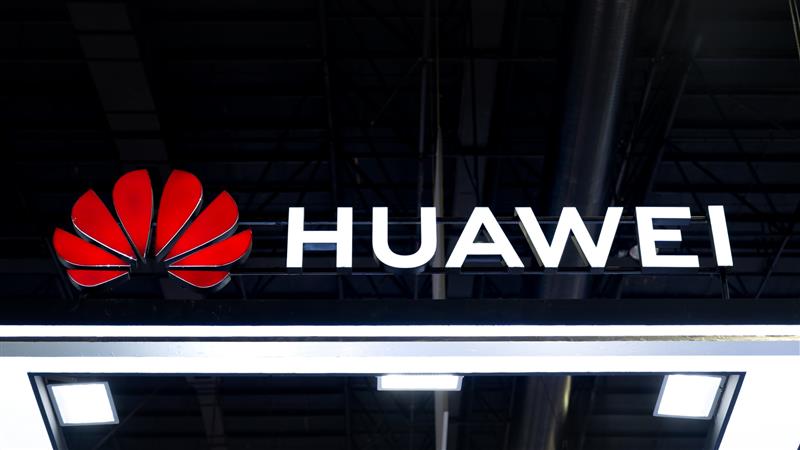
At GITEX 2025 in Dubai, Huawei launched its “All Intelligence” strategy, aggressively deploying a full-stack portfolio of AI infrastructure, from its Ascend AI chips and new Lingqu AI SuperPods to cloud services.
The core of Huawei’s strategy is its indigenous Ascend AI processor series and the computing cluster, Lingqu AI SuperPods, designed to compete with Nvidia’s DGX systems for training large language models (LLMs).
Huawei wants to offer everything. From chipsets to cloud platforms, to provide an alternative – sanctions-resilient – AI supply chain. The ambitious AI Huawei infrastructure is particularly targeting markets in the Middle East, Africa, and Asia, by empowering local partners to build on its proprietary systems.
2025 was a turning point for Huawei’s ambitions. From next-generation chipsets to national-scale cloud solutions, and now its “All Intelligence” strategy, to build a complete, self-sufficient technology stack.
Huawei Ascend Chip and AI Independence
The “All Intelligence” roadmap focuses on linking connectivity, cloud, and AI into one unified framework. Its newly launched GovTech1.0 framework aims to help governments modernize networks, unify data, and roll out AI-powered services.
“GovTech1.0 framework is a strategic blueprint designed to fast-track government modernization and accelerate national digital transformation,” said Allen Tang, president of Huawei’s Middle East and Central Asia ICT Marketing and Solution Sales Department.
To strengthen adoption, Huawei expanded its partner network across 21 countries and introduced 30 new AI-based products for SMEs, all powered by the ascend NPU processors.
“Our goal is to make this powerful technology accessible and actionable for every industry,” said Phillip Gan, president of Huawei Middle East and Central Asia.
The efforts given underline Huawei’s strategy to make Huawei ascend 910b specifications more visible in real-world applications, especially in practical industries like finance, energy, and education.
But, as Huawei AI chip ban policies tighten globally, the company’s shift toward self-developed hardware becomes strategic and necessary.
Huawei’s growing portfolio reflects a deeper attempt to secure supply chains and preserve innovation under Huawei AI chip export controls, while keeping AI deployment cost-effective and localized.
Power Behind Huawei AI Chips
At Huawei Connect 2025 in Shanghai, Huawei pulled back the curtain on the hardware driving its AI expansion: the Ascend AI powered Atlas 950 and Atlas 960 SuperPoDs.
These machines integrate thousands of Huawei ascend chip units to form unified AI systems capable of running massive workloads, showcasing its response to NVIDIA’s GPU-driven supremacy.
“Computing power is – and will continue to be – key to AI. This is especially true in China,” said Eric Xu, Huawei’s rotating chairman. He projected a multi-year plan for Huawei AI chips, with each release of new Ascend generations, 950, 960, and 970, supporting double performance and memory bandwidth.
Xu also unveiled UnifiedBus 2.0, an interconnect protocol that can provide improved Huawei AI infrastructure solution in terms of performance and speed. While NVIDIA still leads its CUDA ecosystem, Huawei’s advantage is its self-reliant AI ecosystem.
Reports by RCR wireless Huawei AI, note that Huawei is investing heavily in scaling data centers and developer tools to make its ecosystem globally competitive. Xu acknowledged the gap but remained confident in their capability to build SuperPoDs and SuperClusters.
With ascend platforms and China AI chips by Huawei, the company’s All Intelligence plan reflects a vision of independence, one where innovation no longer relies on Western chipmakers.
Huawei Ascend NPU Processors
Huawei’s All Intelligence roadmap is more than a showcase of computing power; it’s a statement of intent. The company is placing Ascend AI as the centerpiece of a parallel AI world, built on Chinese technology, local supply chains, and sovereign ecosystems.
Yet, this vision exists in a divided world.
With the absence of open access to global semiconductor expertise, Huawei will build intelligence behind borders. Its challenge is now geopolitical. If Huawei succeeds in bridging local capacity and international connectivity, its autonomous model may redefine AI infrastructure. However, if export bans remain, its “intelligent future” may be powerful, but relatively limited.
Inside Telecom provides you with an extensive list of content covering all aspects of the tech industry. Keep an eye on our Tech sections to stay informed and up-to-date with our daily articles.